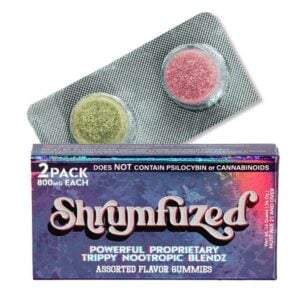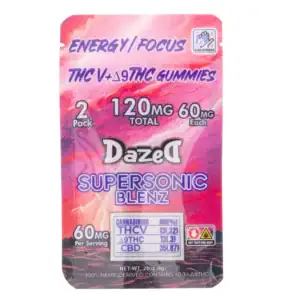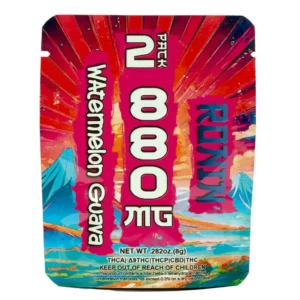Thai Stick: Unraveling the Mysteries of a Classic Cannabis Strain
Thai stick grips the crown as the **ultimate** pick for cannabis enthusiasts, spinning an incredible yarn from the vibrant vibes of Southeast Asia. Emerging from Thailand’s fun-filled nooks, this powerful cannabis variant soared to fame, winning over folks during the groovy 60s and 70s era. Its unique way of making it brought an unmatched high, skyrocketing its fame and etching its name in the annals of cannabis lore.
Throughout the years, Thai stick has undergone various transformations and iterations while maintaining a certain mystique. From notable strains and varieties to its preparation process and medical uses, the story of Thai stick provides a fascinating glimpse into the ever-evolving world of cannabis culture. Despite its controversial history involving smugglers and legalities, this product has managed to remain an icon and influence modern interpretations of marijuana products.
Key Takeaways
- Thai stick originated in Thailand and was known for its high-quality cannabis and unique preparation process.
- The history of Thai stick involves surfers, smugglers, and cultural impact in the marijuana trade during the 1960s and 1970s.
- Modern interpretations and strains of Thai stick continue to influence the cannabis industry and its medical uses.
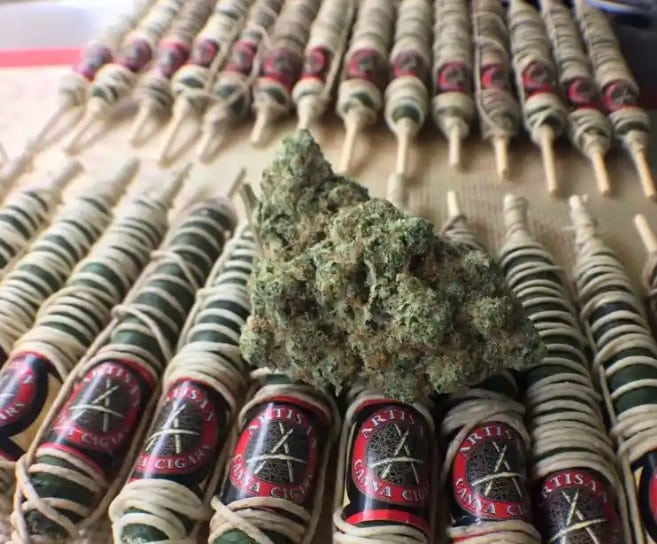
History and Origin
The story of Thai stick, a marijuana product, can be traced back to the late 1960s and early 1970s in Thailand. This unique strain of marijuana was sought after for its potent effects and exceptional quality. It became especially popular during the Vietnam War, when American soldiers were stationed throughout Southeast Asia, including Thailand. The soldiers discovered the powerful and flavorful Thai stick during their time in the region, and its popularity quickly spread.
Growing conditions in Thailand allowed cannabis to thrive, producing strains that were much higher in THC and overall quality than those found in other parts of the world. The distinctive appearance of Thai stick involves a series of thin cannabis buds tied to a thin bamboo stick with hemp fibers. This method of preparation not only made it visually appealing but also made it easier to transport and consume.
As the Vietnam War continued, the demand for Thai sticks increased significantly, eventually reaching the United States. Veterans and soldiers who had experienced the potency of this unique strain brought back their love for it, further contributing to its popularity. At the height of its fame, Thai stick became a symbol of adventure and worldliness, adding to its mystique and legendary status.
Despite the end of the war and changing global attitudes towards marijuana, Thai stick remains a popular product in the cannabis community. It serves as a reminder of the rich history and cultural connections between Thailand, Vietnam War veterans, and cannabis enthusiasts worldwide.
Craft and Creation
Thai stick, a traditional cannabis product, is known for its unique craft and creation process. Originating in Thailand, this cannabis cigar involves several elements like bud, bamboo stick, hemp string, and even hash oil in some variations.
The process begins with a carefully selected, high-quality bud that is still fresh and somewhat sticky. The buds are skillfully arranged around a thin bamboo stick, which serves as a support and helps in maintaining the cigar’s shape. The art of securing the buds to the bamboo stick requires patience and precision to ensure an even burn.
Once the buds are aligned, a hemp string is used to wrap them tightly around the bamboo stick. The hemp string is essential because it holds the buds in place, allowing them to dry and cure correctly. This process can take several days or even weeks, depending on factors like humidity and temperature, and plays a crucial role in the Thai stick’s final quality.
In some variations, a coating of hash oil is applied to the outer surface of the Thai stick to enhance the potency and flavor. This extra step makes the Thai stick an even more luxurious cannabis product, often reserved for special occasions or connoisseurs.
The final step involves replacing the hemp string with a hemp wick to ensure a smooth, even burn when it is time to consume the Thai stick. The hemp wick is a natural alternative to traditional lighter fluid, which can contain harmful chemicals and impart an unpleasant taste when used with cannabis.
Unlike a typical joint or blunt, a Thai stick is more of a cannabis cigar that provides an extended, intense smoking experience. The crafting process demands skill and patience, making Thai sticks an artisanal creation enjoyed by those who appreciate the finer aspects of cannabis culture.
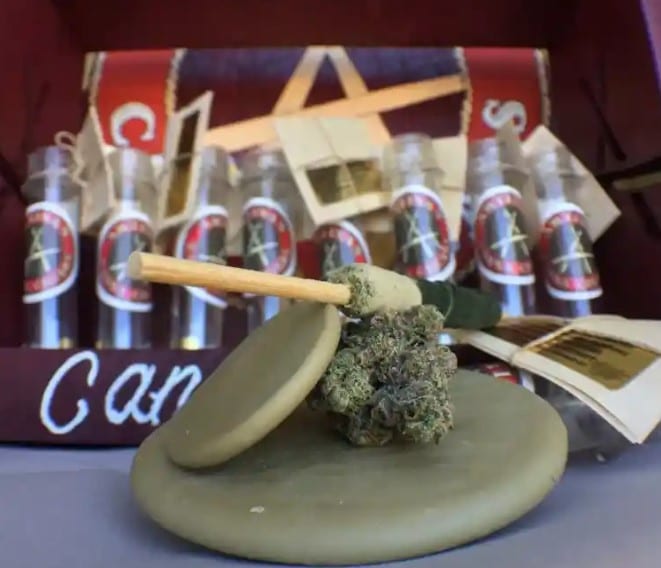
Notable Varieties and Strains
Thai Stick is a term referring to the traditional method of preparing cannabis in Thailand. Historically, it involved tying cannabis buds onto bamboo or hemp sticks with fibers like hemp twine or thin strips of plant material. One notable strain associated with Thai Stick is the Thai, a pure Sativa landrace strain native to Thailand. This strain is known for its uplifting effects and unique floral aroma.
Another popular strain often used in Thai Stick preparations is Afgoo Head. Afgoo Head is a cross between Afghani, an Indica landrace strain, and a potent Sativa known as Maui Haze. This hybrid provides a well-balanced mix of relaxation and cerebral effects, making it a sought-after choice among cannabis enthusiasts.
When it comes to buds used for Thai Stick preparation, it’s essential to consider their potency and cannabinoid content. One study comparing the potency trends of Δ^9-THC and other cannabinoids showed that the THC content of landrace strains like Thai has increased significantly over the years. This increase in potency makes Thai Stick an even more enticing option for those looking for a strong and enjoyable experience.
Some other strains that may be used in Thai Stick preparations include:
| Blueberry: Known for its fruity aroma and relaxing effects, this Indica-dominant hybrid strain might be a great addition to a Thai Stick, providing a soothing and mind-relaxing experience. |
| Chocolate Thai: A rare Sativa strain with a chocolate flavor profile and uplifting effects, Chocolate Thai can offer a unique twist on the traditional Thai Stick. |
| Green Crack: A potent Sativa strain, Green Crack provides an energetic high that could balance out the potentially drowsy effects of other Indica strains in a Thai Stick. |
While there are many strains to choose from, the key to a satisfying Thai Stick experience is selecting buds with desirable effects, potency, and flavor profiles. By experimenting with different combinations of strains, one can create a unique and personalized cannabis experience.
Smoking Experience
The smoking experience of Thai stick can be quite different compared to regular marijuana due to its unique preparation method. Traditionally, Thai stick marijuana buds are wrapped around a bamboo chopstick using plant stems or fibers, and sometimes even dipped into hash oil for added potency 1.
Using a pipe or bong can enhance the smoking experience with Thai stick. These devices allow for smoother and cooler smoke, which can make the overall experience more enjoyable. To start, use a lighter to ignite the end of the Thai stick carefully, ensuring an even burn all the way around.
Once the Thai stick is lit, inhale the smoke through your choice of device, such as a pipe or bong. When inhaling, take slow, controlled breaths to allow the cannabinoids to be absorbed properly into your lungs. Keep in mind that Thai stick can be quite potent, so it’s essential to start with smaller hits and assess your tolerance level 2.
In summary, smoking Thai stick can provide a unique and memorable experience. Utilizing devices like pipes and bongs can contribute to a smooth and flavorful inhale, while the careful preparation and the potential addition of hash oil can lead to a potent and satisfying experience. Remember to start slow and enjoy the process.
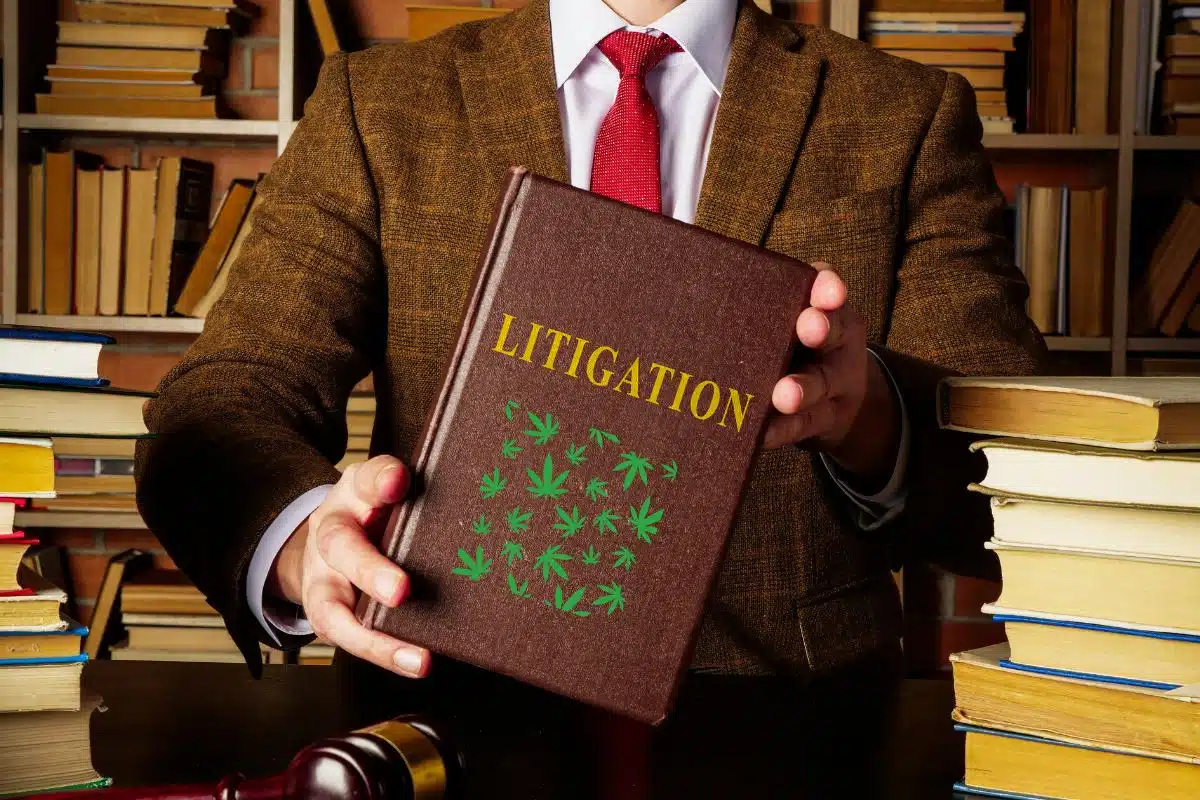
Legality and Controversy
Thai stick, a potent and popular form of cannabis, has faced varying levels of legality and controversy across the globe. In the United States, cannabis remains classified as a Schedule I substance under the Controlled Substances Act, making it illegal at the federal level. However, many states have legalized marijuana for medicinal and recreational purposes, creating a complex legal landscape for Thai stick and other forms of cannabis.
In some countries, like Thailand, the origin of Thai stick, the cannabis culture has had a rich history, with products like Thai sticks being famous for their potency. This exported form of cannabis was made by tying leafy marijuana around sticks. The Thai government, however, has implemented strict anti-drug policies, leading to the criminalization of cannabis in the country.
Legalization movements have expanded internationally, with some countries opting for more lenient regulations or fully legalizing cannabis, such as Canada and Uruguay. This progress has sparked debates on the potential benefits and risks of cannabis, including Thai stick. Proponents of legalization argue that it can boost economic growth, improve public health, and reduce crime rates, while opponents express concerns about potential substance abuse, impaired driving, and negative long-term health effects.
In legal regions where cannabis has been decriminalized or legalized, Thai stick maintains its reputation as a potent and sought-after strain. As the global conversation on cannabis continues, the legality and controversy surrounding Thai stick and other forms of marijuana remain a topic of discussion and ongoing debate.
Medical Uses and Benefits
Thai stick, a potent cannabis strain originating from Thailand, has gained popularity for its potential medical applications. Due to its high THC content, Thai stick may offer some notable benefits for patients with various medical conditions.
One of the primary medical uses of Thai stick is for pain management. Patients suffering from chronic pain may find relief through the use of this cannabis strain. The high THC levels present in Thai stick work as an analgesic, reducing inflammation and alleviating pain throughout the body.
Another potential medical advantage of Thai stick is its ability to manage stress and anxiety. The strain may help to promote relaxation and induce a sense of calmness that can counteract stress and anxiety in daily life. This soothing effect may be particularly beneficial for individuals dealing with mental health conditions such as post-traumatic stress disorder (PTSD) or anxiety disorders.
Thai stick has also been reported to stimulate appetite, making it useful for patients undergoing treatments that cause a loss of appetite, such as chemotherapy or certain medications. By enhancing appetite, Thai stick may contribute to weight maintenance and overall nutritional health in these individuals.
Some evidence also suggests that Thai stick may have potential benefits for those experiencing sleep disorders. The strain’s relaxing effects can potentially help individuals struggling with insomnia by encouraging a more restful night’s sleep.
While there are promising indications of Thai stick’s medical uses and benefits, it is essential for individuals considering using this cannabis strain to consult with their healthcare providers. This is particularly crucial if using Thai stick in conjunction with other medications or existing medical conditions. By approaching this treatment option with caution, patients can maximize the potential benefits and minimize potential risks associated with using Thai stick for medicinal purposes.
Cultural Impact
The cultural impact of Thai Stick spans several areas, including surfing communities and the marijuana trade between Thailand and the U.S. during the latter part of the 20th century. The book “Thai Stick: Surfers, Scammers, and the Untold Story of the Marijuana Trade” by Peter Maguire and Mike Ritter delves into these cultural connections, recounting a fascinating period in history.
| Surfers played a significant role in the Thai Stick phenomenon. Pioneering surfers who traveled across the world seeking new waves were often involved in smuggling high-quality cannabis, sometimes referred to as Thai Stick, from Southeast Asia back to the United States. This illicit trade became entwined with the growth of global surfing culture. |
| Instagram has seen users sharing images and stories about the marijuana trade, and Thai Stick has re-emerged as part of the cannabis subculture. With the relaxing of marijuana laws in several U.S. states, nostalgia for the days of Thai Stick has gained a new following on the social media platform. |
| The U.S. experienced the influence of Thai Stick through the thriving marijuana trade, primarily during the 1960s and 1970s. When cannabis from Thailand was brought to the U.S. by these surfers and smugglers, it quickly gained popularity for its high quality and potency. As a result, Thai Stick became a sought-after product among marijuana enthusiasts in the U.S. |
| Peter Maguire and Mike Ritter, the authors of “Thai Stick: Surfers, Scammers, and the Untold Story of the Marijuana Trade,” have documented this unique aspect of global history. Their work is an ode to a time when the world was a different place, and it highlights how Thai Stick became a cultural phenomenon in both the U.S. and Thailand. |
In summary, the cultural impact of Thai Stick was felt in diverse ways, from the surfing communities that spread word of the high-quality marijuana to the broader American population that enjoyed the product. Today, Thai Stick remains a potent symbol of a curious era of counterculture, collaboration, and global connections.

Modern Interpretations
Thai stick, a cannabis product which originated in Thailand, has evolved over time to incorporate modern techniques and interpretations. Today, it is seen as a luxury marijuana product, often referred to as a cannabis caviar or an artisan kanna cigar.
The traditional Thai stick involves skewering cannabis buds onto a bamboo stick and wrapping the skewered buds with hemp fibers. The stick is then cured, allowing the flavors to meld together. In its modern form, the Thai stick is often crafted with additional cannabis concentrates, such as hash oil or kief, to provide a more potent and flavorful experience. This enhanced version is sometimes called a luxury blunt.
The process of creating a modern Thai stick involves several stages:
- Curing: As with traditional Thai sticks, curing is essential to develop and retain the unique flavors and aromas of the cannabis.
- Rolling: The cured Thai stick is then rolled in cannabis concentrate, such as hash oil, to give it an added layer of potency.
- Coating: The concentrate-covered Thai stick is rolled in kief, a fine cannabis powder, which further amplifies the potency and flavor.
- Wrapping: Once coated, the Thai stick is wrapped in leaves or a tobacco leaf, as is done with an artisan kanna cigar.
These modern interpretations of the Thai stick cater to connoisseurs seeking a refined and potent cannabis product. While traditional Thai sticks remain popular, these luxurious variants have found a niche among aficionados seeking a premium marijuana experience. As cannabis culture continues to evolve, it is likely that Thai sticks will assume new and innovative forms that build upon its rich history and tradition.
Preparation Process
Preparing Thai sticks involves a series of steps to ensure optimal potency and flavor. The process begins with curing the cannabis to remove excess moisture and develop its aromatic profile. Proper curing allows the buds to retain their unique flavors and maintain their cannabinoid content.
During the curing process, cannabis buds are typically placed in a well-ventilated area where there is sufficient airflow to avoid mold and mildew growth. The curing process may last several weeks, depending on the desired outcome.
Once the buds are properly cured, they are then tightly compressed around a skewer or bamboo stick. This creates the traditional Thai stick shape and allows for even burning when smoked. Fine cannabis leaves or fibers are sometimes used to wrap the compressed buds, which not only adds an extra layer of protection but also enhances the overall smoking experience.
Kief, the resinous trichomes containing the majority of the plant’s THC, is often added to Thai sticks for an extra potency boost. This can be done by rolling the compressed buds in kief, effectively coating their exterior with a dusting of potent crystals.
The next step in the preparation process involves sealing the Thai stick with an adhesive substance. Traditionally, cannabis resin or hash oil would be applied to the exterior of the stick using a flame or a torch. This not only helps to secure the kief coating but also assists in preserving the stick’s potency and flavor during storage.
Finally, the prepared Thai stick is left to mature for an additional period of time, further enhancing its flavor and potency. This extended curing process allows the various components of the stick – the cured buds, kief, and hash oil – to meld together, resulting in a truly unique and enjoyable smoking experience.
By following these steps, a well-prepared Thai stick provides a potent and flavorful cannabis experience, showcasing the mastery of traditional preparation techniques combined with high-quality cannabis materials.
Frequently Asked Questions
Where can I buy Thai Stick?
In most cases, Thai Stick is not widely available in local dispensaries or online shops. The sale and distribution of Thai Stick are subject to local laws and regulations. If you are interested in purchasing a Thai Stick, it is best to inquire directly with licensed cannabis providers in your area.
What is the history of Thai Stick?
Thai Stick is a legendary cannabis product originating from Thailand in the 1960s and 1970s. It became famous during the Vietnam War era when American soldiers were introduced to it while stationed in Southeast Asia. Thai Stick consists of high-quality cannabis buds wrapped around a bamboo stick or skewer, which are then covered with cannabis leaves and tied with hemp strings. Traditionally, Thai Stick is cured and sometimes dipped in opium, making it a potent and unique cannabis experience.
Is Thai Stick a sativa or indica?
Thai Stick is typically made from a sativa strain of cannabis known for its energetic and uplifting effects. Thailand is known for producing high-quality sativa strains, which are well-suited to the humid and tropical climate of the region.
Can you still get Thai sticks?
Original Thai Sticks are considered rare today, primarily because the production techniques and specific strains used are not commonly found. However, some enthusiasts and skilled artisans may create their versions of Thai Stick, albeit without the opium dipping that was once part of the process. You might be able to find these modern Thai sticks in select locations or from specialty producers, but they may not be exactly the same as the traditional Thai Stick from the past.
What is the difference between Cannagar and Thai Stick?
A Cannagar is a cannabis cigar, while a Thai Stick is a skewered and wrapped cannabis product. Both involve wrapping cannabis buds, but Cannagars are often larger and more elaborate, sometimes incorporating various cannabis concentrates and unique rolling techniques. Additionally, Thai Sticks have a distinct history and origin from Thailand, while Cannagars are a more recent creation with multiple cultural influences.
What are some images of Thai Stick?
You can find images of Thai Stick by performing a simple image search on search engines like Google or Bing. These images will show you the traditional appearance and construction of Thai Stick, as well as modern adaptations and interpretations of the legendary cannabis product.
Footnotes
- https://www.tandfonline.com/doi/full/10.1080/17541328.2015.1066094
- https://www.degruyter.com/document/doi/10.7312/magu16134-016/html








